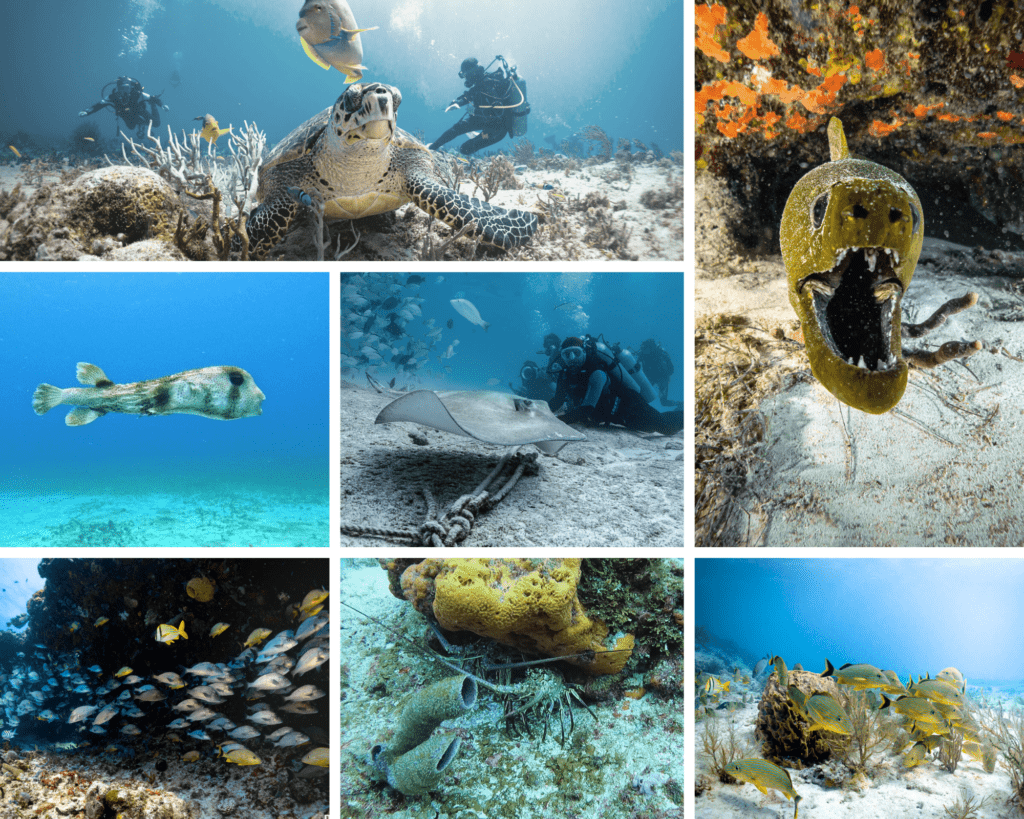The ocean varies greatly around the globe, and different waters attract different marine animals who like to call it home. These are some of the best marine species you’re likely to spot on a dive in the oceans off Playa del Camen.
Keep Your Eyes Peeled for These Marine Creatures!
From fish to turtles, crustaceans and sharks, our oceans are full of exciting marine creatures.
The ocean waters from the coast of Playa del Carmen is pretty warm all year round, and is brimming with ocean life for you to see on your next dive day!
But what marine animals are down there? I hear you say!
Check out this article and we will share with you 9 of the best marine animals you’re likely to spot on your ocean dives in Playa del Carmen.
1. Turtles

Everybody loves spotting a turtle on a dive! These cute hard-shelled creatures can be seen on a variety of dive sites from Playa del Carmen, often while they are eating, snoozing amongst the corals, or just taking a swim.
Most frequently you’ll see green turtles who tend to be found munching on the sea grass along the reefs. You can also spot some hawksbill turtles too, known for their more pointed beak, but these do tend to be a little more shy and timid.
Rarely, you can even see Loggerhead turtles too. They’re not seen that often, but if we get to see them on a dive they’re quite impressive in their size, with a large domed shell.
Mexico’s beaches serve as nesting and hatching grounds for several species of turtles, with generations of turtles returning to the same beach they were born on to lay their own eggs.
2. Bull Sharks
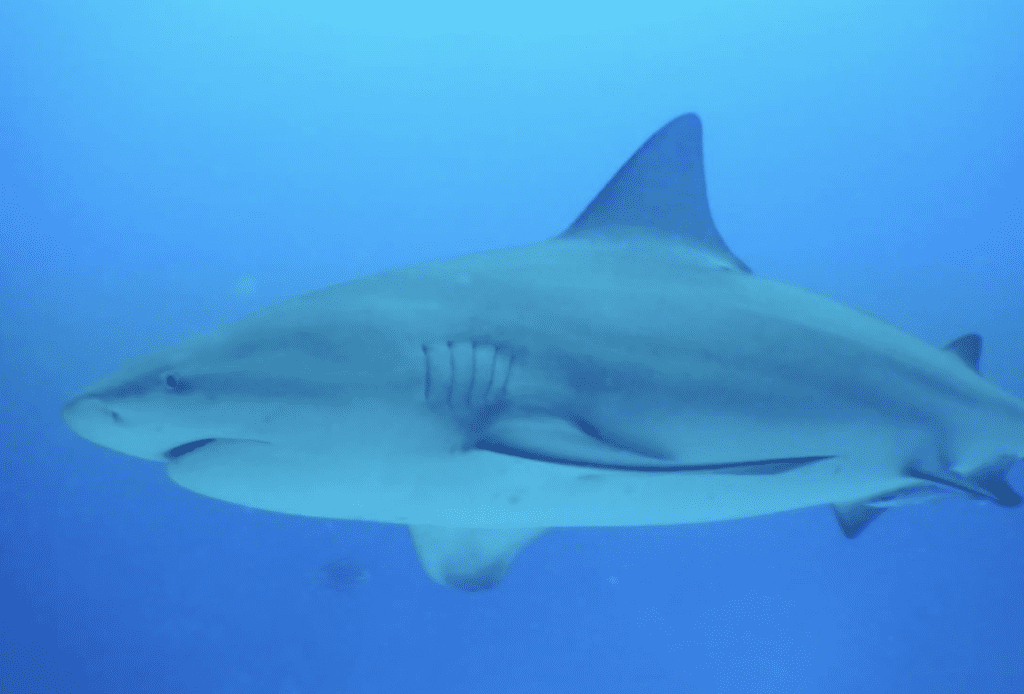
During the winter months, pregnant bull sharks arrive to the waters just off the coast of Playa del Carmen. They frequent this location for their gestation period, usually from November to around February before disappearing to have their babies.
Observation dives to see the bull sharks are possible during this time, and it’s fascinating to watch them getting fatter as their pregnant bellies swell over the course of the months.
These sharks have the classic ‘shark’ look, but will just glide around the area while we divers get to observe them in their natural glory.
3. Moray Eel
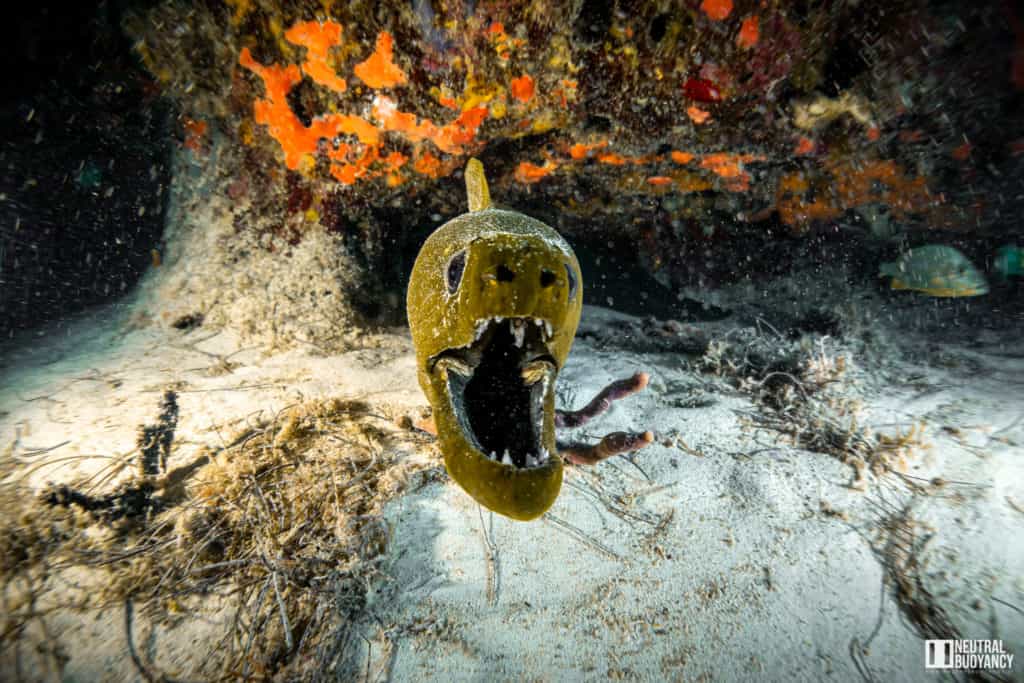
If you pay close attention to the cracks and holes in the reefs in Playa del Carmen, you will likely spot a moray eel or two! Most commonly you will see green morays and spotted morays, who like to find a cozy hole to live in. They sit with their head poking out of the hole and mouths wide open to sense for food.
Despite its name, a green moray eel isn’t actually green! The has a brownish-grey skin color which has a layer of yellow mucus covering its body, this sticky mucus helps to protect the eel from parasites.
Be careful not to poke too close to an eel, as they are known to snap at divers and can leave a nasty bite.
4. Lobster
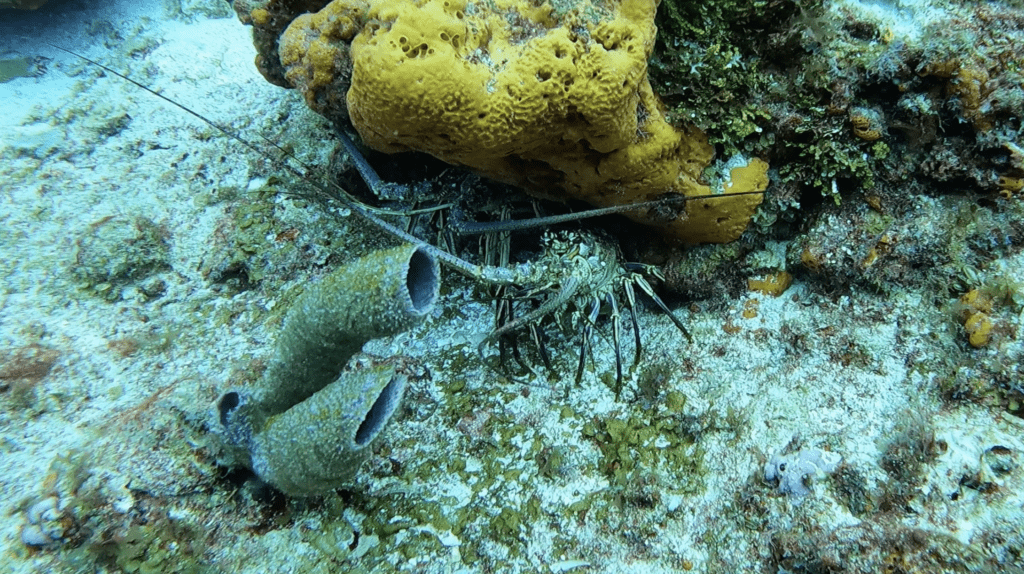
Another dweller of crevices and reef overhangs is the lobster. In the waters from Playa del Carmen, we usually find Caribbean spiny lobsters. These guys have a exoskeleton, that is covered with some pretty sharp spikes, which protects them from predators.
Unlike many other species of lobster, the ones found here don’t have the enlarged front claws usually thought. But you can often spot their enormously long antennae sticking out from their hiding spots.
During the day they are pretty inactive, but at night they will come out and can be spotted foraging for food, eating pretty much anything it can find.
5. French Grunts

In Playa del Carmen, there are many dive sites, such as Jardines, where you come across – what can only be described as – a WALL of fish! It’s like being inside an actual aquarium being surrounded by so many fish and marine animals! Commonly you can find huge schools of French grunts.
Although there are different types of grunts, the ones in these waters are typically yellow with silver lines across their bodies and have large silvery eyes.
Grunts are not deep-sea dwellers, preferring to swim in shallow waters in tropical climates. The shallow sites of the Riviera Maya are a perfect home!
6. Jack Fish

There are many different types of jack fish, with the name used collectively for a few different varieties. They are known for their characteristically silve color and are found usually in large schools which can be known to roam considerable distances in search of food.
Although they can be seen on the reefs in Playa del Carmen, they are not strictly reef fish, and are also common over rocky areas, and large “drop-offs”.
7. Southern Stingrays
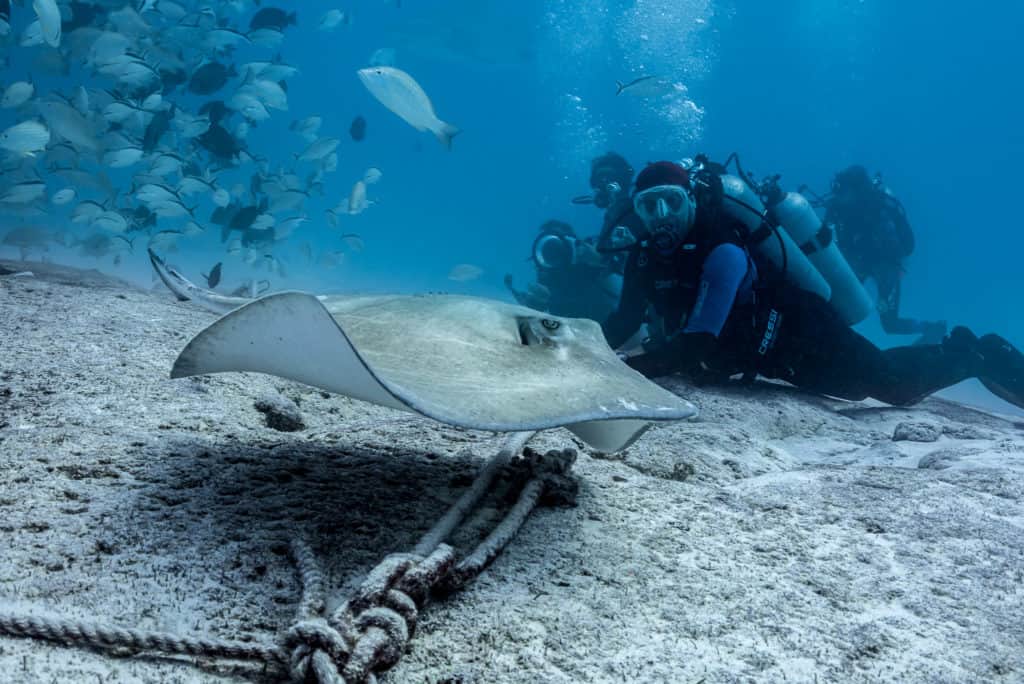
The most common type of ray found in the oceans off the Yucatán Peninsular is the southern stingray. These large flat fishes are relatives of sharks and skates and spend most of their life ‘scurrying’ close to the sandy bottom for the sea floor.
At times, you might spot a southern stingray buried in the sand with only its large eyes popping above the sandy hiding place, this can be tricky to see, but they often leave a little trail in the sand that can guide you to where it is resting!
When fully grown, mature southern stingrays can be as large as five feet wide (1.5meters), with a long thin, whiplike tail, but the usually the average size is smaller.
8. Spotted Porcupinefish
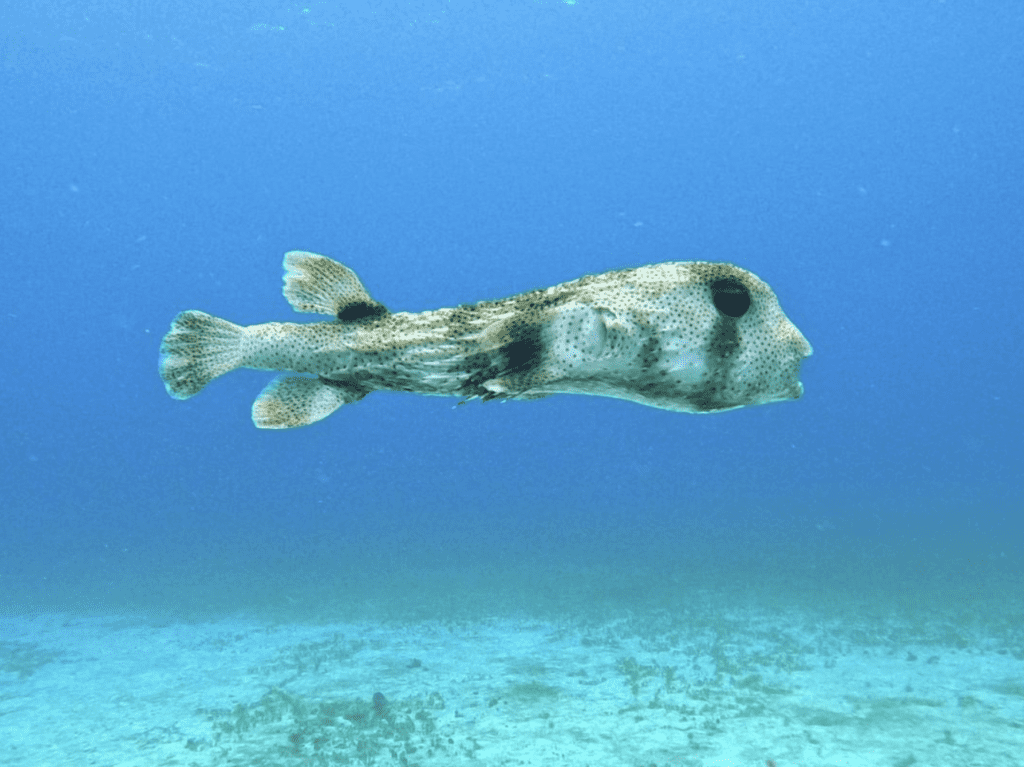
Although commonly referred to as a pufferfish, it is the spotted porcupinefish that is commonly found in the warm waters here in this part of Mexico. These fish tend to be more solitary and are often seen alone or with a buddy, rather than flocking in giant schools like many other fish species.
With their large head and hauntingly empty, big, black eyes, these fish look almost cartoonlike in their form.
As porcupinefish have a great defense mechanism, they can be found in waters away from the safety of the reef. When they are close to a predator, they can swallow water to ‘inflate’ their body into a spiky balloon. This method is very effective at keeping a porcupinefish safe as it is very difficult and dangerous for a predator to attempt to eat it when it is in this state.
9. Parrotfish
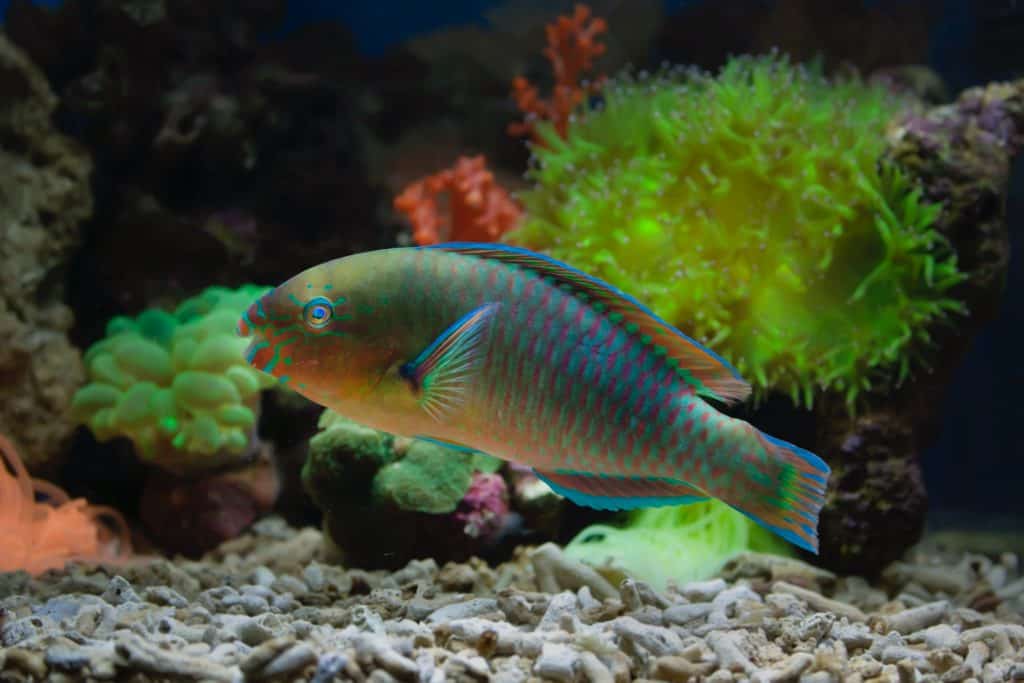
Named after the most colorful birds in the sky, parrotfish are some of the most colorful fish on the reef. As well as bright shiny scales, they also have a bird-like beak, which they use to nibble at the algae on the corals.
When they eat the coral and rock, it is digested and ‘pooped out’ as sand, which helps to preserve the sandy beaches you enjoy in Playa during your vacation.
Other Notable Mentions
This list makes up the commonly found marine animals in the Caribbean water from the coast of Playa del Carmen, and some more in our neighboring Cozumel.
There are many more to mention, which are less common, but also are seen here, like Eagle rays, flying gurnards, Caribbean reef octopus, blue tangs, barracuda, and seahorses too!
Plus, there is a whole bunch of macro life (we’ll dedicate a whole article to them soon!) with cleaner shrimp, and flamingo tongue snails to name a couple!
Dive with these Marine Animals in Playa del Carmen
There are a whole host of incredible dive sites in Playa del Carmen where these marine species can be spotted.
Come with us at DivePoint Mexico to explore the reefs and we can show you where these cute and amazing animals call their home!


